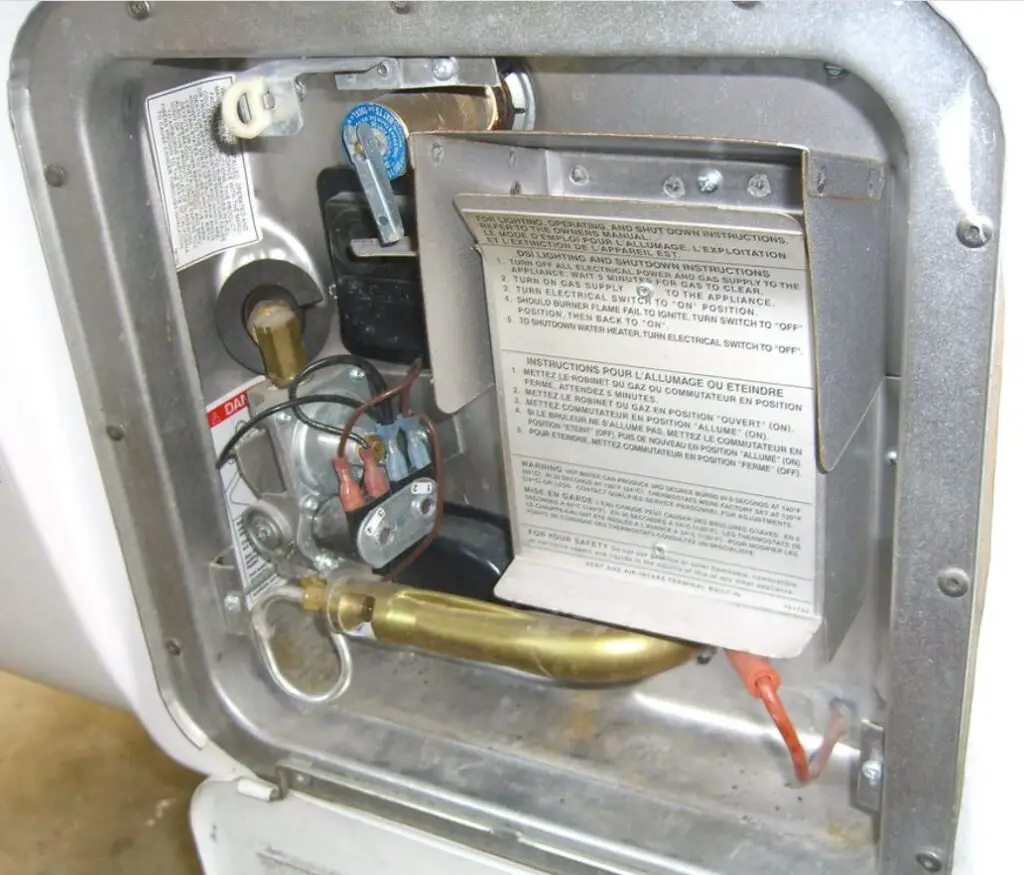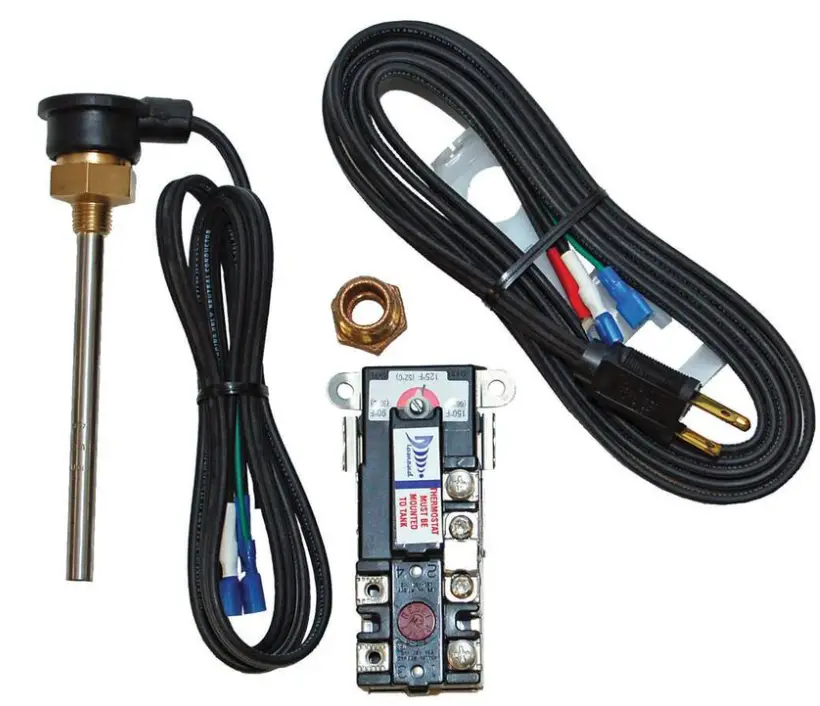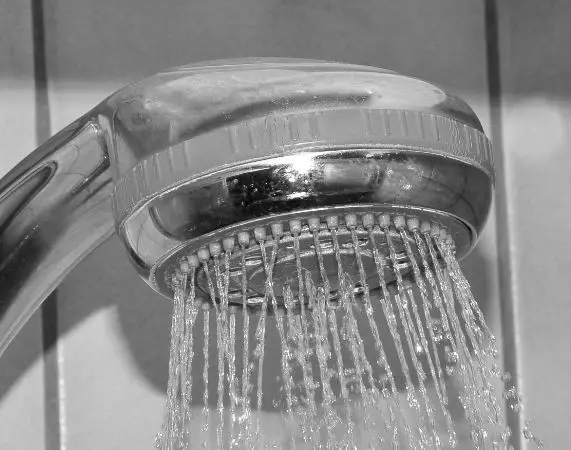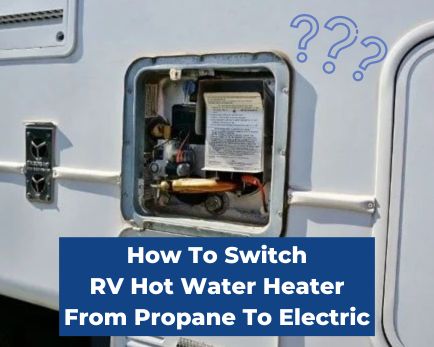Switching an RV water heater from propane to electric can provide a more efficient and cost-effective way to heat water while on the road. While propane water heaters are the more traditional option, electric water heaters can be a great alternative for RV owners who want to save money and reduce their carbon footprint. By following a few simple steps, RV owners can easily switch their water heater from propane to electric.
One of the first steps in switching an RV water heater from propane to electric is to locate the electric power switch. This switch is usually located outside the RV, on the driver’s side, behind a panel. Once the panel is open, RV owners can flip the switch to the “on” position, and their water heater will begin to run on electric power. Another option is to install a conversion kit that includes a special rod attachment and a thermostat that can be attached to the side of the tank and plugged into a standard RV outlet.
We’ll go through both options below in today’s guide.
How To Switch Your RV Water Heater’s Power Source

Switching your RV water heater from propane to electric can be a great way to save money on fuel costs. Here are the steps to switch your RV water heater’s power source from propane to electric:
Step 1: Turn The Water Heater Off
The first step is to locate the main power source for your RV. This is typically a breaker box near the front of the vehicle. Find the circuit breaker for the water heater and flip it to the “off” position. This will ensure that the water heater is not running on propane while you switch the power source to electric.
Step 2: Locate The Electric Panel That Controls The RV Water Heater
Next, go outside the RV and look for a panel (usually on the driver’s side) that controls the RV water heater. Open the panel to access the electric power switch.
Step 3: Open The Panel And Locate The Electric Power Switch
In the bottom left-hand corner of the panel, you will find the small switch that turns the electric power to your water heater on. Flip this switch to “ON”.
Step 4: Turn The Switch On
Once you have located the electric power switch, turn it on. Your water heater will now be running on electric power.
Switching your RV water heater from propane to electric is a simple process that can save you money on fuel costs. By following these steps, you can easily switch your RV water heater’s power source from propane to electric.
Converting Your RV Propane Water Heater To Electric With A Conversion Kit

Converting your RV propane water heater to electric is a great way to save money and energy. With an RV water heater electric conversion kit, you can easily switch your RV’s water heater from propane to electric. The kit typically includes a new heating element, an electrical cord, wiring, and installation instructions.
Gather the tools you’ll need to do the job before starting. You’ll need the following items:
- Adjustable wrenches or a socket set
- Drill and metal bit
- Screwdriver
- Razor knife
- Teflon pipe tape / plumbers tape
- Rag and bucket
Here are the steps to follow:
Step 1: Turn Off The RV Water Heater
Before you start the conversion process, make sure to turn off the RV water heater. This switch turns the propane water heater off or on.
Step 2: Drain The Tank
Next, drain the water tank by opening the pressure relief valve and removing the drain plug. This will allow the water to drain out of the tank and prevent any damage to the heating element during installation.
Step 3: Install The Heating Element
Once the tank is drained, install the new heating element into the tank. The heating element is designed to fit into the tank’s existing mounting bracket. Make sure to tighten the element securely to prevent any leaks. You may need to drill a hole in the tank’s housing to run the wiring for the electric heating element to the thermostat.
Step 4: Attach Wiring To The Element And Wire Into The RV
Attach the wiring to the heating element and wire it into the RV’s electrical system. This will require running the wiring through the RV’s walls and connecting it to the appropriate circuit breaker.
Step 5: Install Thermostat & Heating Element On The RV Water Tank
Install the heating element and thermostat on the RV water tank. The thermostat will regulate the water temperature and ensure that the water is heated to the desired temperature.
Step 6: Reattach The Propane Fittings
Reattach the propane fittings to the water tank. This will allow you to switch back to propane if needed in the future.
Step 7: Fill The Water Tank
Fill the water tank with water. This will allow you to test the heating element and thermostat to ensure they are working properly.
Step 8: Plug In The Thermostat
Plug in the thermostat and turn it on. This will allow you to adjust the temperature and ensure that the water is heated to the desired temperature.
Step 9: Turn The RV Power Back On
Finally, turn the RV power back on and test the water heater. Make sure to check for leaks and ensure that the water is heated to the desired temperature.
Why Convert An RV Water Heater To Electric From Propane?

Converting an RV water heater from propane to electric can provide several benefits for RV owners. One of the most significant benefits is the reduction of propane use and the cost of fuel. RV campsites often include the cost of electricity into their daily or weekly rates, making it more cost-effective to use electric power to heat water.
Another advantage of converting to an electric water heater is the ability to keep hot water going in your RV even if the propane runs out. This can be especially important for RV owners who frequently travel to remote areas where it may be difficult to find propane refills.
Electric water heaters also heat water faster, allowing RV owners to enjoy hot water more quickly. This can be especially beneficial for those who enjoy camping in colder climates.
Finally, converting to an electric water heater can reduce the weight of hauling propane tanks. This can be a significant advantage for RV owners who are looking to reduce the weight of their RV and improve fuel efficiency.
Check out our other helpful RV repair guides while you’re here:
Common problems filling fresh water tank on RV and how to fix them

